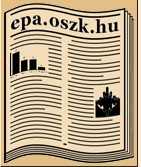Translation Issues for Non-Machine Translated Technical Books
Abstract
Abstract: The rapid advancement of machine translation means that research findings on MT quality and translator practices may be outdated by the time of publication. This raises the question: Can similar rapid progress be expected for genres that currently resist MT, demanding creative technical skills and deep con- tent considerations? This paper aims to justify the current publishing stance that rejects MT for multidisciplinary technical books, providing a snapshot to help future comparative analyses to assess MT’s developmental trajectory in these specialized areas The emphasis on “technical books” in the title is deliberate, since my observations do not apply to many other professional genres, such as user manuals and descriptive texts, which MT effectively handles. It is essential to give machines tasks for which they are suited (Prószéky, 2025), so it would be useful to identify text types and genres suitable for MT with acceptable outcomes. The “corpus” for this study comprises technical books translated from English into Hungarian. The analysis categorizes and exemplifies persistent translation challenges where the skills and knowledge of a human translator remains indispensable. These include: 1. Ability to make a conscious choice of translation strategy; 2. Ability to recognise and render rhetorical purpose; 3. Ability to recognise and render metaphors; 4. Comparison of the information content with the information content that is relevant or accessible to the target language audience; 5. Ability to manage terminology; 6. Ability to translate professional or literary quotations from the source language. In conclusion, while the current quality of translations provided by MT and artificial intelligence (AI) may suggest that further improvements can be expected, particularly in translating technical books, at present the expertise of specialist human translators is still needed.
Copyright (c) 2025 Júlia Dróth

This work is licensed under a Creative Commons Attribution-NonCommercial 4.0 International License.











1.png)
